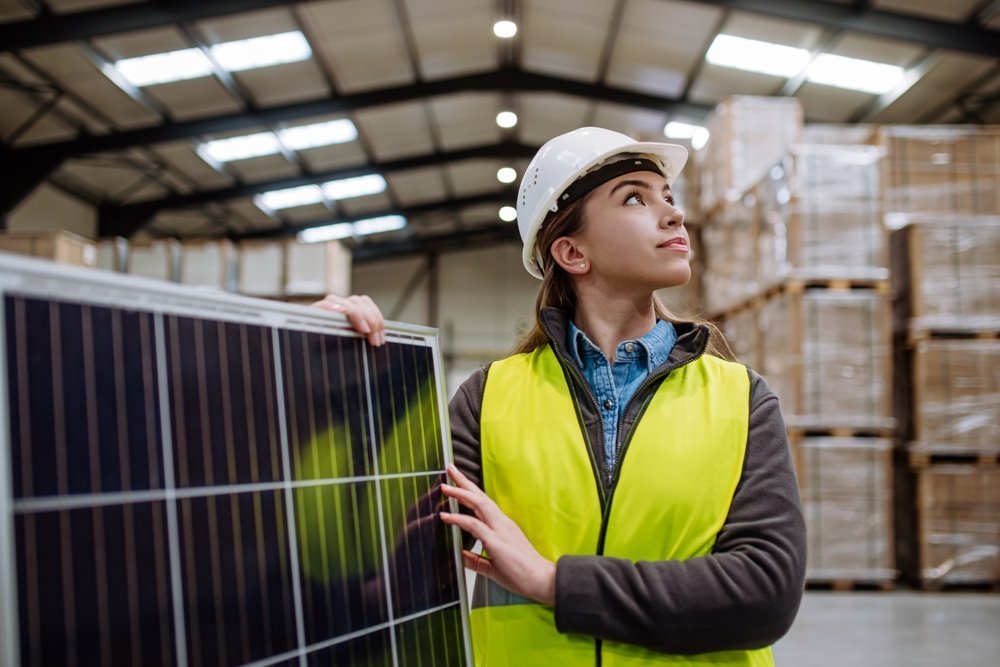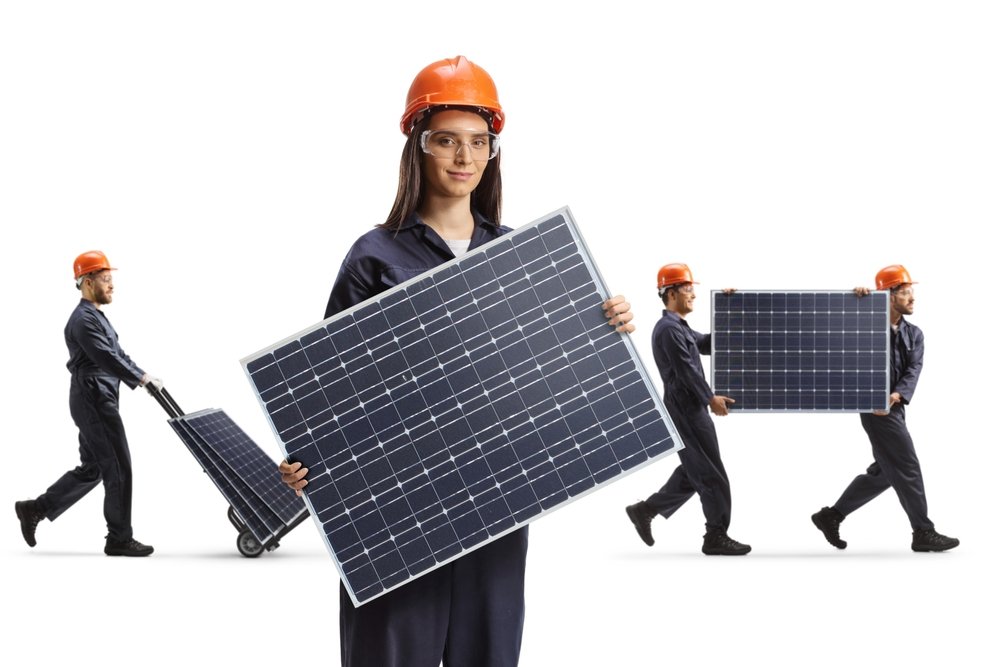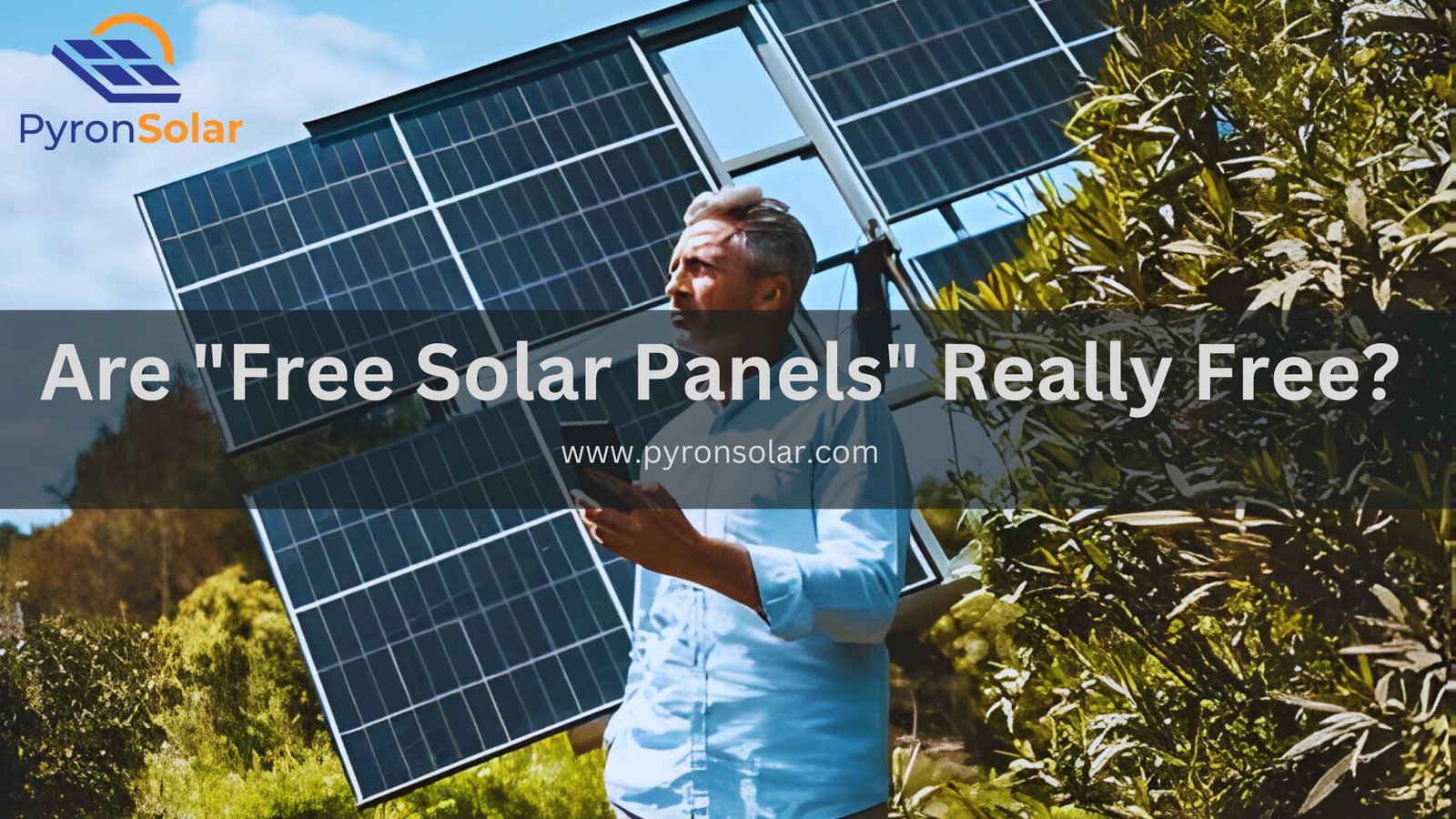Who would say no to anything which is mentioned as FREE? And when it comes to Free Solar Panels? Of course, it is alluring and undeniable as they seem to promise ways of harnessing solar energy, without any upfront costs. But while we come across such offers, there is one question that often arises, are “free” solar panels really free?
However, you need to understand that these offers usually pertain to solar leases or PPAs. In a solar lease, you rent the solar panel system from a third-party provider. Whereas in PPA, you pay for the generated solar power at a fixed rate.
Are you aware of why companies offer solar panels for free? And what are the hidden costs of free solar panels? If you don’t, then we will walk you through these concepts and keep you equipped with how to go solar with no upfront costs and how to reduce the cost of solar. Also, we will discuss other important aspects, whether can you get free solar panels from the Government and are free solar panels a scam.
What Are Free Solar Panels? Do Companies Really Offer Solar Panels for “Free”?

Companies use the terminology “FREE Solar Panels” because you don’t have to pay for the equipment or its upfront installation cost. The companies refer to a solar lease or PPA (Power Purchase Agreement), where the provider installs and maintains solar panels on your property without upfront cost.
Solar leases and PPAs are beneficial ways of using solar energy without owning the solar panels. In a solar lease, you need to pay a fixed monthly payment, and in PPA, you purchase the solar system-generated power calculated based on price per kilowatt-hour (kWh).
Contractual Agreement Details of:
- Solar Lease: Includes details of lease terms, monthly payments, and maintenance responsibilities.
- PPA: Includes details of pricing structure, contract length, and potential early termination fees.
Ownership Status is the same for both solar leases and PPAs, as the company owns the solar panels and the homeowner just rents the system for an agreed-upon period. It simply means that the homeowner cannot claim the ownership rights of the panel, but just pays for using the system.
Typically, the term length of Solar leases ranges from 20 to 25 years, during which you will pay a fixed monthly amount for using the panels. Whereas, the term length of PPAs ranges from 10 to 25 years. However, at the end of the PPA contract term, you might opt to extend the PPA, ask the provider to remove the system, or you can choose to buy the system.
With the immediate financial implications, you can immediately start using solar panels to save cost on your electricity bills. Whereas in long-term financial implications, you do not own the solar panels, which impacts benefits like property value increase, and incentive eligibility. Also, it becomes an obstacle while selling your property as buyers hesitate to take over the agreements.
What Are The Hidden Costs of Free Solar Panels
Free solar panels can be eye-catching, but you must know about the disadvantages of solar leases and power purchase agreements (PPAs).
Here are a few downsides and hidden costs involved with these arrangements:
- Limited Savings: In Solar leases and PPAs, although you would save on your electricity bill, overall long-run savings are lower than the solar panels purchased outright with cash or through a solar loan.
- Solar Incentives and Rebates: One of the major drawbacks of solar leases and PPAs is that you will not own the solar panel system. It means you will not be eligible for solar incentives and rebates, including — the federal investment tax credit (ITC), solar renewable energy certificates (SRECs), and other local rebates. However, these benefits are enjoyed by the solar company owning the system installed and maintained on your property.
- Quality of Solar Panels: Because you don’t own the system, a few companies limit the quality by using low-quality solar panel materials. As a result, these panels do not perform well and might not be capable of converting many solar rays to energy compared to other panels. Hence, lacking ownership can negatively impact long-term performance and system maintenance. For all this reasons it is very important to know “how to choose the right solar panel”.
Contractual complexities that might affect selling the home or buying out the lease are:
- The Obstacle to Sale: Both solar leases and PPAs can become the major barriers to selling your property, as buyers usually hesitate to take over the agreement made with the solar company.
- Buying Out the Lease: When you decide to buy out the lease, you might have to deal with the expensive termination fees and more complicated contractual terms.
- Escalator Clause: Most solar leases will include an escalator clause in their terms and conditions, which means your monthly payment might gradually increase over time.
How can you Go Solar With No Upfront Costs?
You can go solar without any upfront costs by opting for different financing methods which include solar loans, solar leases, and power purchase agreements (PPAs). Let’s delve into these options, with their advantages and disadvantages.
With Solar Loans, you don’t have to purchase equipment beforehand or do not have to spend money for solar panel installation. It is the best option if you are looking to have independence and better ROI (Return On Investment).
- Advantages: You will have the sole ownership rights of the solar panel system, and you will be eligible to benefit from all available financial incentives, tax credits, and rebates along with solar energy.
- Disadvantages: You will have to take responsibility for solar system maintenance and monitoring.
In Solar Leases, you are contractually agreeing with a third-party solar provider, where you will not have any ownership rights over the solar panels installed on your property. Instead, the solar company that had leased you the panels will hold the ownership.
- Advantages: No down payment, and you will have minimal maintenance responsibility as the repairs or any issues will be covered by the solar leasing company.
- Disadvantages: You are not the owner of solar panels and cannot be eligible to benefit from financial incentives, tax credits, and rebates that come with solar energy.
The PPAs (Power Purchase Agreements) are similar to solar leases, hence you do not own the solar panels, but you will just be paying for the electricity generated by the solar panels rather than paying a fixed monthly lease payment.
- Advantages: No upfront costs and solar provider takes the maintenance responsibility.
- Disadvantages: You do not own the solar panels, and you won’t be benefiting from the financial incentives, tax credits, and rebates that are associated with solar energy.
How To Reduce the Cost of Solar
Undoubtedly, solar energy is the best renewable source of power that can reduce your electricity bills, but its initial cost for installation can be high. Fortunately, there are various financial incentives available that can greatly reduce the overall solar system installation cost. The included incentives are — federal and state tax credits, property and sales tax exemptions, rebate programs, and SRECs (Solar Renewable Energy Certificates).
Federal and state tax credits are a type of incentive that will ultimately reduce your income tax amount. As per the Government rules, you will be getting back a credit of 30% from 2022-2032 for the installation expenses. Also, you will be able to claim only 26% in 2033, which is a declined tax credit.
Property Tax Exemptions make it possible to exclude your solar system while performing the valuation (for taxation purposes). Whereas, Sales tax exemptions reduce your expenses on solar panel installation upfront costs. However, these exemptions tend to differ by state and are not available everywhere.
Rebate programs deliver upfront incentives by reducing the solar panel installation cost. Usually, the state governments or utility companies run these programs. However, the exact rebate amount will differ based on the solar system size, property type, and location.
SRECs (Solar Renewable Energy Certificates) is an incentive based on performance which allows you to earn extra income from your solar system’s energy production. As a result, you can earn 1 SREC for every MWh (megawatt-hour), or 1,000-kilowatt hours (kWh), of your solar system-generated electricity.
The eligibility criteria for these incentives vary based on location, and you must be a permanent citizen, owning a suitable house for solar panel installation. Also, you need to have a valid electricity connection and should have not used any other solar panel subsidy.
Will you Get Free Solar Panels From the Government?

There are various supports offered by the US government to encourage using solar energy, which include:
- Solar ITC (Investment Tax Credit): Incentives provided for new solar system installation, in the form of a Federal tax credit that provides a reduction in direct taxes owed. However, the Inflaton Reduction Act of 2022 has come up with an extension of ITC up to 2035 with an increased credit amount.
- Cash Rebates: Although these rebates keep varying based on the location you are living, and range up to thousands of dollars.
- SRECs (Solar Renewable Energy Certificates): Only certain states offer this and allow you to sell your certificates to your utility.
- Performance-Based Incentives: It depends on the amount of surplus energy produced, which allows you to earn hundreds or thousands of dollars per year.
- Subsidized Solar Loans: Lower APRs compared to the market rates.
- Solar for All Grant Competition: The U.S. EPA (Environmental Protection Agency) launched this competition to expand affordable, resilient, and environmentally friendly solar energy for many low-income earning houses.
Some US states have developed their programs to support the wide installation of solar panels. These states including — California, Texas, and Minnesota are offering benefits greater than the ITC, Puerto Rico, and it also offers some extra incentives for solar panels. Furthermore, some cities are offering upfront rebates for installing solar panels, with eligibility criteria that keep varying from city to city.
Are Free Solar Panels a scam?
NO, Not all offers about free solar panels are scams, but you must be very cautious as they can sometimes be misleading too. Always remember that “Free Solar Panels” by itself isn’t a scam, but fraudulent scammers using this term can misuse their sales tactics to trick you out of money, gathering your personal information.
Always consider it as a warning signal against high-pressure sales tactics because legitimate companies will never put pressure on you to act immediately without giving you time to consider their offer.
However, you can differentiate between a scam and a legitimate offer by following these steps:
- Perform good research about the Company’s legacy and how long it has existed.
- Check the consumer reviews and their ratings about that company.
- Compare the offers provided by the company with other companies and the Internet.
- Ask Questions and observe whether they can answer your queries.
While you are considering opting for free solar panels, you need to understand the fine print in solar leases and PPAs (Power Purchase Agreements). Usually, these agreements include complex terms that are not easy to understand. Here are a few points you must consider:
- See to it that you are comfortable with the long-term commitment of Solar leases and PPAs, which generally last for 20 to 25 years.
- Have a clear understanding of your payment structure and about escalator clause in the agreement which might spike up the monthly payments over time.
- Check the agreement thoroughly about whose responsibility it is to maintain and repair the solar panels.
- Read the end of the lease points of the agreement, because you might have the option to purchase the system, renew the existing lease, or have the entire system removed. So you must understand these terms before signing the agreement.
Ray is an avid reader and writer with over 25 years of experience serving various domestic and multinational private and public energy companies in the USA.

